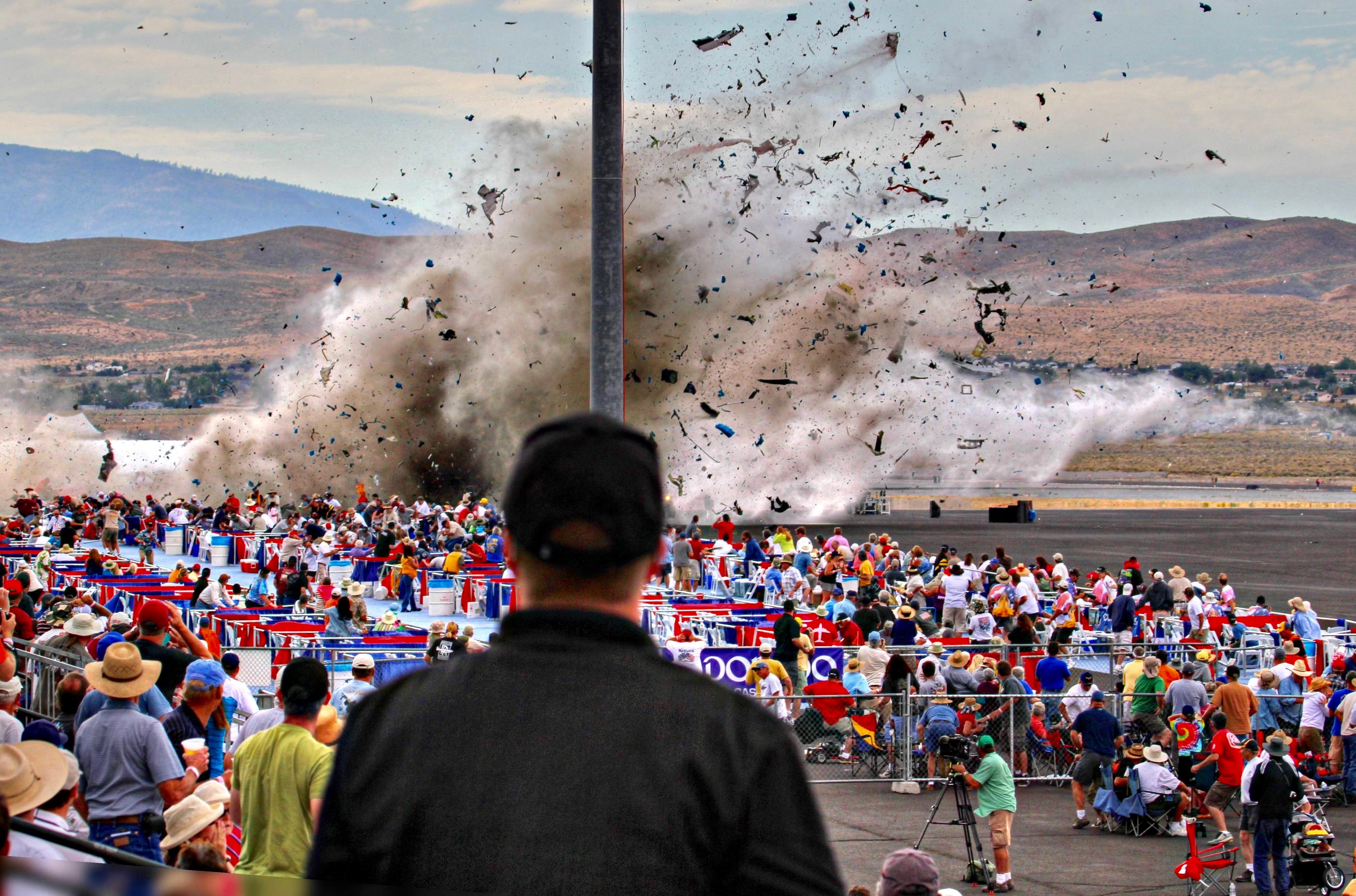
16 September 2011: In the late afternoon, six highly-modified World War II-era fighters were competing in a preliminary heat for the Unlimited Division championship of the National Championship Air Races, being held at the Reno-Stead Airport (RST), about 12 miles (19 kilometers) northwest of the central business district of the city of Reno, Nevada. The field elevation is 5,050 feet above Sea Level (1,539 meters). The races were being flown over an 8.4-mile (13.5 kilometers) ovate course, marked by ten pylons. All turns were made to the left.
The competitors for Heat 2A were three North American Aviation P-51D Mustangs, a Goodyear F2G-1 Corsair, a Grumman F8F-2 Bearcat, and two Hawker Sea Furies.
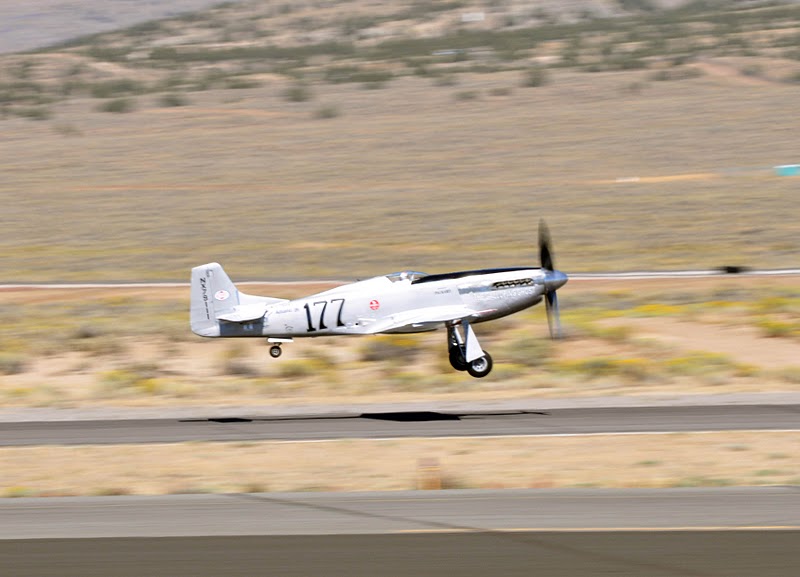
The Galloping Ghost, race number 177, was flown by its owner, James Kent Leeward. On lap number three, Leeward was 4.5 seconds behind the second-place P-51, Voodoo, and 8.8 seconds behind the heat leader, Strega, also a radically-modified Mustang. The airplane was at approximately 445 knots (512 miles per hour, or 824 kilometers per hour) as it rounded Pylon 8 in a steep left bank.
At 16:24:28.9 Pacific Daylight Time, The Galloping Ghost‘s angle of bank rapidly increased from 73° to 93° in just 0.83 seconds. (The NTSB referred to this as a “left-roll upset.”) (Wake vortices from the leading air racers may have been a factor in this left-roll upset. Investigators found that they could not exclude the possibility.) The air racer, corrected by its pilot’s aileron input, rolled back to the right, but then violently pitched up. The airplane essentially flew itself into an inside loop, then crashed into the ground directly in front of a seating area.
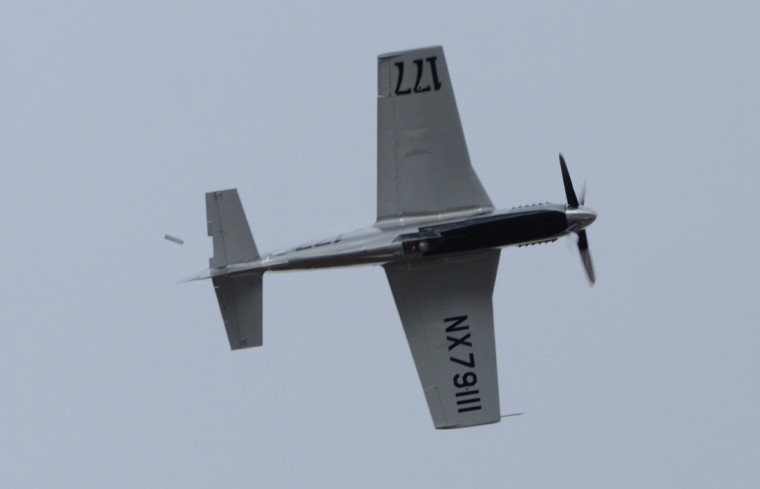
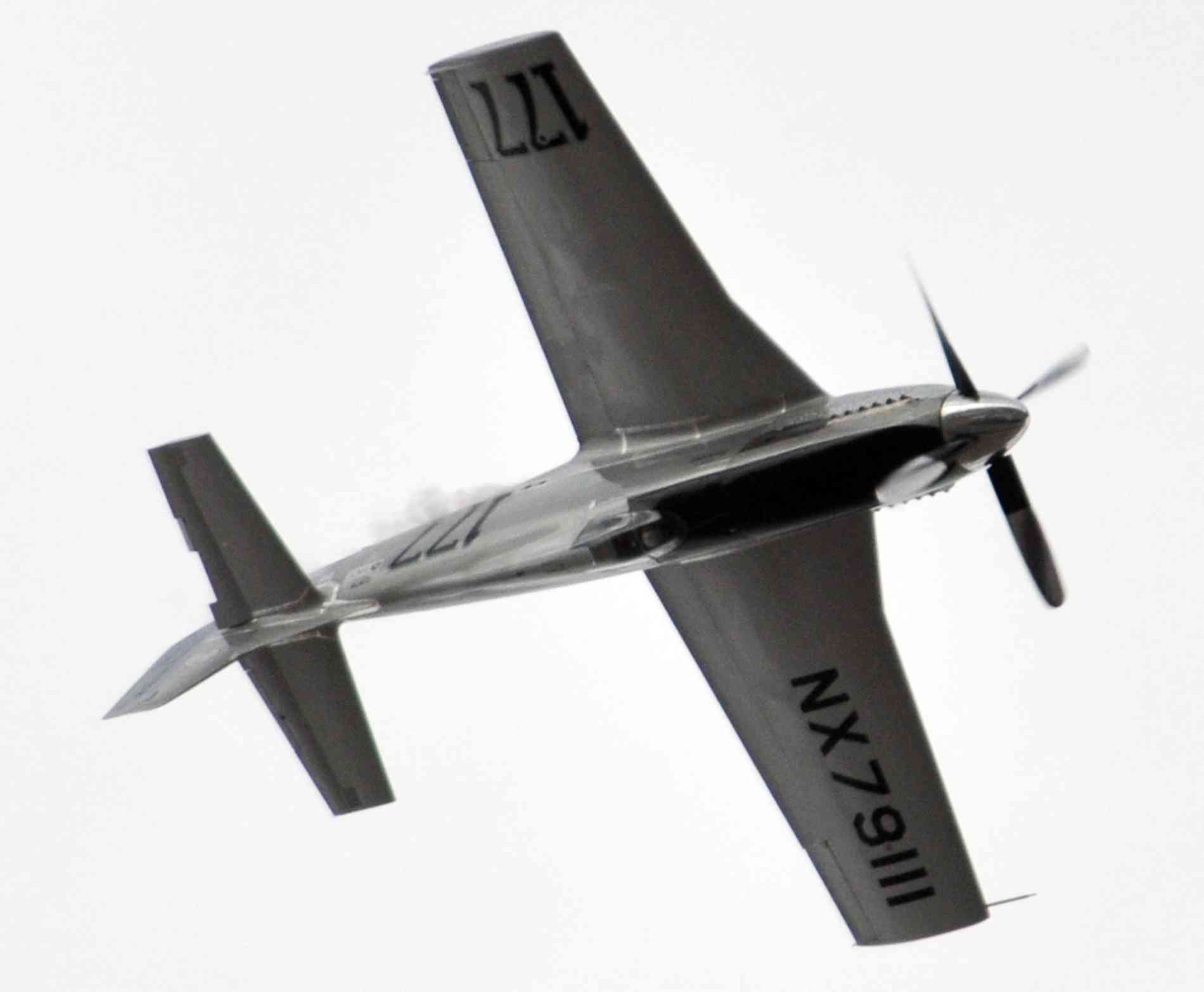
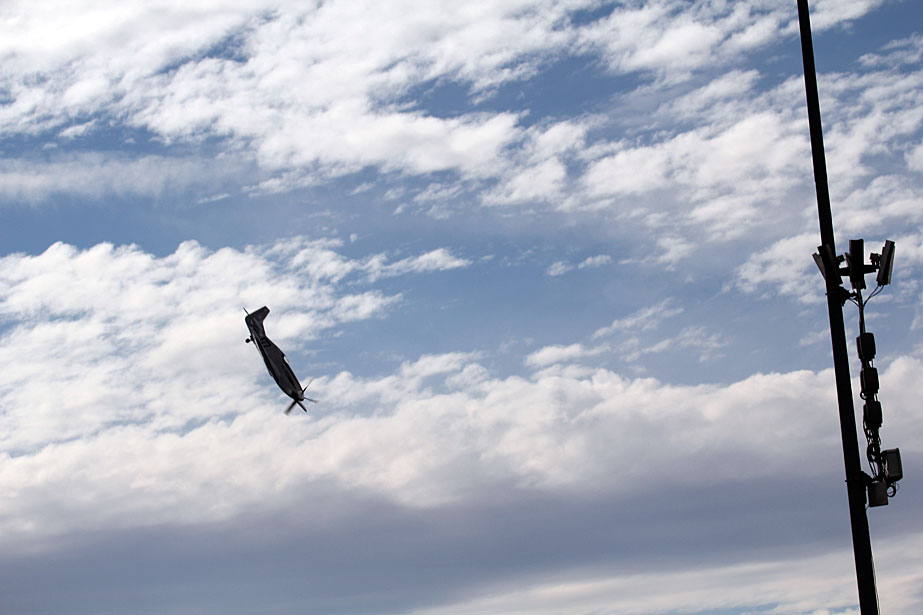
The Galloping Ghost was totally destroyed. Jimmy Leeward and 11 spectators were killed, with at at least 69 others injured.
The Galloping Ghost had been built in 1944 as a P-51D-15-NA Mustang, serial number 44-15651, by North American Aviation, Inc., at its Inglewood, California factory. Following World War II, the very low-time fighter was sold off as surplus equipment.
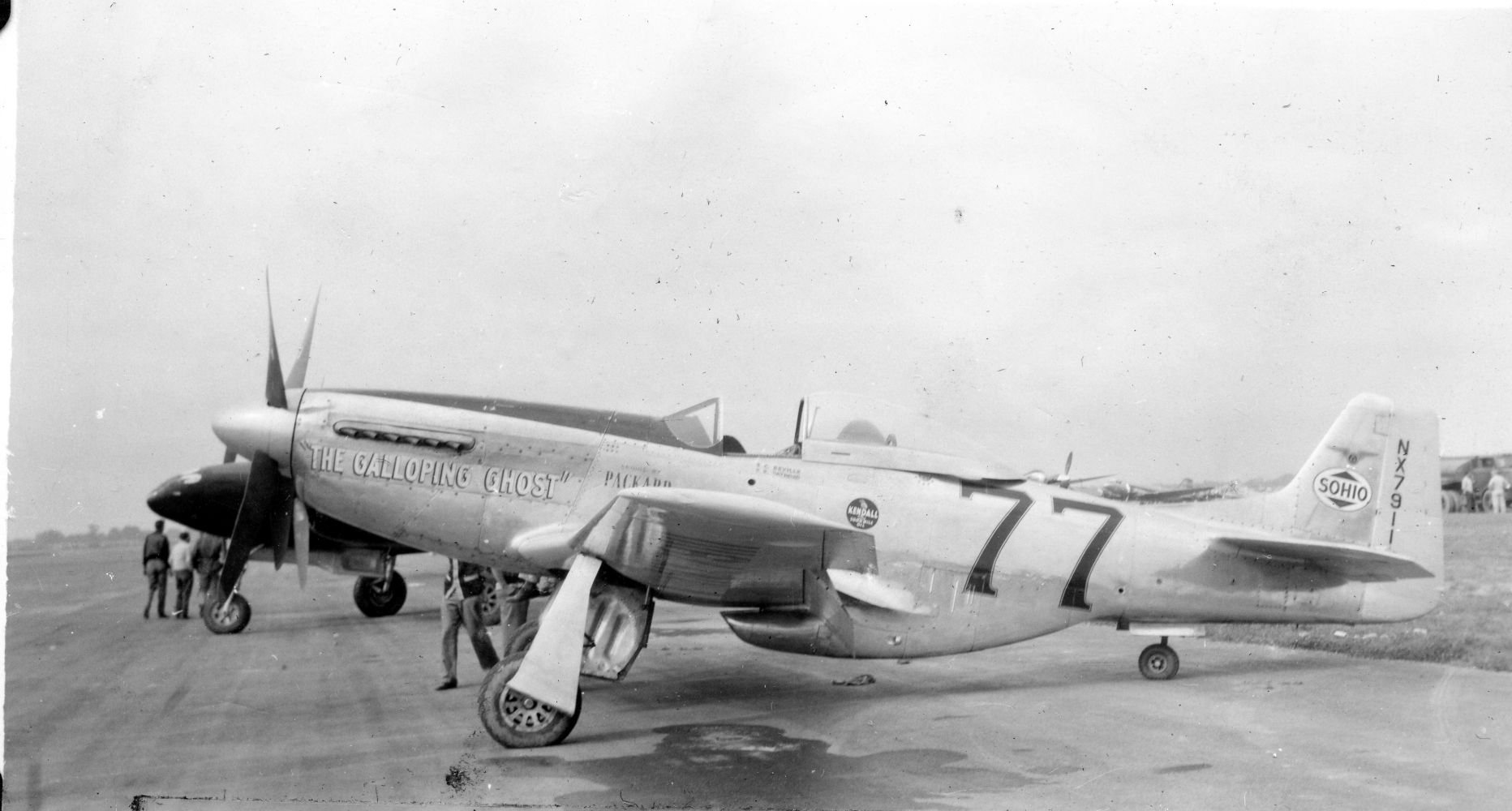
Registered NX79111 and carrying the race number 77, it was flown by Bruce Raymond in the 1946 Thompson Trophy Race, finishing in fourth place. In 1947, Steve Beville flew The Galloping Ghost in the Kendall Trophy Race, finishing in first place with an average speed of 384.602 miles per hour (618.957 kilometers per hour). He then finished in fourth place in the Thompson race. For the 1948 National Air Races, Bruce Raymond was back in the cockpit of number 77. He finished in fourth place in the SOHIO Trophy Race, first in the Tinnerman Trophy Race, and second in the Thompson. In 1949, Beville again flew 77 in the SOHIO and Thompson Trophy Races, finishing fourth in both.
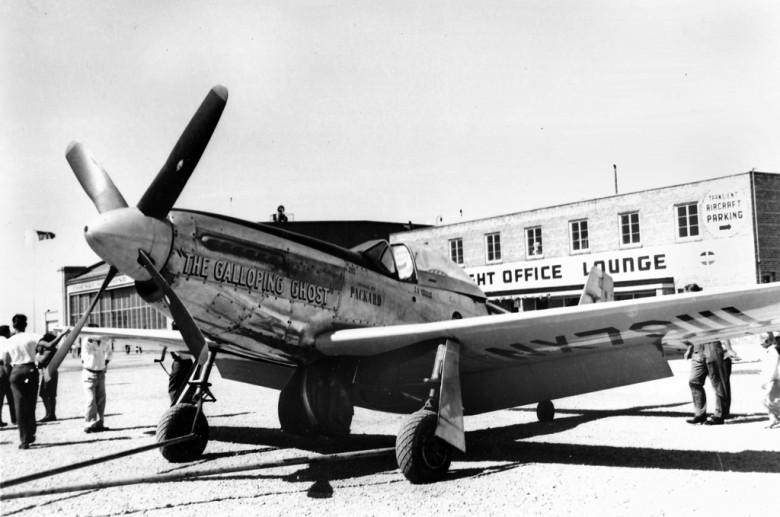
The airplane was later raced as Miss Candace and Jeannie.
On 18 September 1970, N79111 crash landed near the Reno-Stead Airport following an engine failure during a race. The P-51 was substantially damaged.
Jimmy Leeward purchased the fighter in July 1983. After racing it for years, the airplane was placed in storage. Then, beginning in 2007, the airplane underwent a series of radical modifications. Some of these were similar to those made to other Unlimited Division racing planes, however, there was no evidence of engineering before, or flight testing, following these mods.
The most obvious modifications were made to the profile of the P-51D’s fuselage. The standard windshield and bubble canopy were removed and replaced by a much smaller unit. This was smoothly faired into a raised dorsal “razorback” which carried aft from the cockpit to the vertical fin. The lower fuselage, with its Meredith Effect radiator scoop and cooling ducts, was completely removed and a new fuselage belly constructed.
The standard Mustang cooling system was replaced by a “boil off” system in the aft fuselage. Rather than radiators which remove heat from the engine coolant by the passage of air, heat exchangers were immersed in a solution of water and methanol. A 150 gallon supply was in a tank in the left wing.
The Mustang’s wings had been shortened from the standard span of 37 feet, 0 inches (11.278 meters) to 28 feet, 10 inches (8.788 meters). The ailerons were each shortened from about 7 feet (2.1 meters) to 3 feet (0.9 meters). The horizontal stabilizer span was shortened from 14 feet, 10-5/32 inches (4.525 meters) to 12 feet, 1 inch (3.683 meters), and its angle of incidence increased from +0.5° to +0.91°. The vertical fin was offset to the right of the airplane’s longitudinal axis, instead of to the left, as built by the factory. The ailerons were not properly adjusted, which required the pilot to use constant pressure to the right on the control stick to keep the wings level.
On the standard Mustang, both elevators are equipped with adjustable trim tabs on their trailing edges, which the pilot uses to adjust the flight controls’ neutral positions. On The Galloping Ghost, the right elevator trim tab had been deactivated, placing increased load on the left trim tab. The elevators and rudder used weighted counterbalances. These, too, had been modified. The total weight for both elevator counterweights had been raised to 53.5 pounds (24.3 kilograms), nearly four times the maximum allowable weight of 13.75 pounds (6.24 kilograms). Similarly, the rudder counterbalance weight was increased to 25 pounds (11.3 kilograms). The maximum allowable weight was 16.6 pounds (7.5 kilograms).
According to its maintenance records, at the time of the accident, N79111 had flown a total of 1,453.6 hours. Its Packard V-1650-9A Merlin V-12 engine had been overhauled to military specifications at 1,428.9 airframe hours. The four-bladed Hamilton Standard 24D50 propeller had just 24.7 hours since new. The modified airplane had an empty weight of 6,474 pounds (2,936.6 kilograms). Accident investigators estimated its weight at the time of the upset as 7,760 pounds (3,202.4 kilograms).
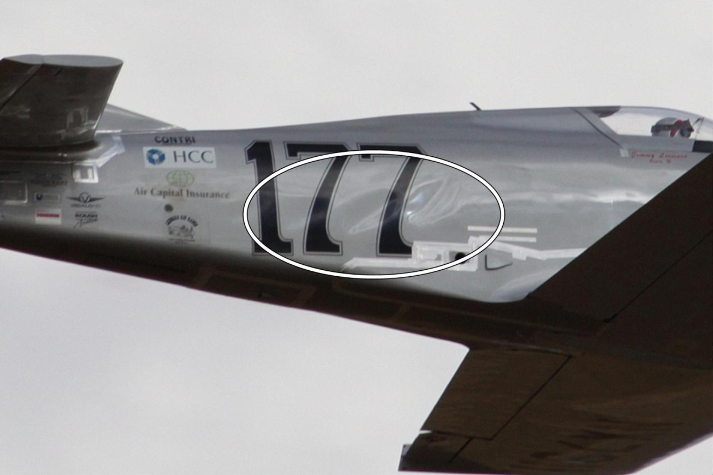
Photographs taken during the first lap showed significant diagonal wrinkles in the fuselage of The Galloping Ghost, just behind the right wing, which were not present before the race started. A photograph taken during the third lap showed similar wrinkles on the left side of the fuselage. It is apparent that the modifications to the Mustang’s fuselage had significantly weakened its structure.
The left and right elevator trim tabs are attached to their hinges by three screws, each. These are secured by locknuts. NTSB investigators found that two of these screws had broken due to overload during the flight. (One screw was found to have had a pre-existing fatigue fracture.) All of the screws were loose in their locknuts and could easily be turned by hand. All six locknuts were worn beyond limits and were incapable of maintaining torque.
The loose trim tab attachment allowed the trim tabs to flutter because of the aerodynamic loads of very high speed flight. This flutter produced loads beyond the strength of the trim system. These loads caused the linkage to the left tab to break. Without the linkage, flutter increased the movement of the tab beyond its limit and the hinge broke. The left tab moved beyond its normal limit, and caused the the linkage to bend and then fracture. With the left tab uncontrolled, the flutter was transmitted to the right elevator tab which had been fixed in place with a steel rod. The vibrations caused its fixed link assembly to fracture.
The loss of the downward force which the left trim tab applied to its elevator caused the elevator to move upward. This caused the airplane to violently pitch up. Investigators calculated that Leeward would have been subjected to an acceleration of 17.3 Gs, far beyond human tolerance. He was immediately incapacitated.
With its pilot unconscious and the airplane traveling at such high speed, it went completely out of control. It flew inverted into a “helical” pattern and then, with the Merlin engine still at wide-open throttle, crashed into the ground at a very steep angle.
The National Transportation Safety Board reported:
3. PROBABLE CAUSE
The National Transportation Safety Board determines that the probable cause of this accident was the reduced stiffness of the elevator trim tab system that allowed aerodynamic flutter to occur at racing speeds. The reduced stiffness was a result of deteriorated locknut inserts that allowed the trim tab attachment screws to become loose and to initiate fatigue cracking in one screw sometime before the accident flight. Aerodynamic flutter of the trim tabs resulted in a failure of the left trim tab link assembly, elevator movement, high flight loads, and a loss of control. Contributing to the accident were the undocumented and untested major modifications to the airplane and the pilot’s operation of the airplane in the unique air racing environment without adequate flight testing.
—National Transportation Safety Board. 2012. Pilot/Race 177, The Galloping Ghost, North American P-51D, N79111, Reno, Nevada, September 16, 2011. NTSB/AAB-12-01. Washington, DC.
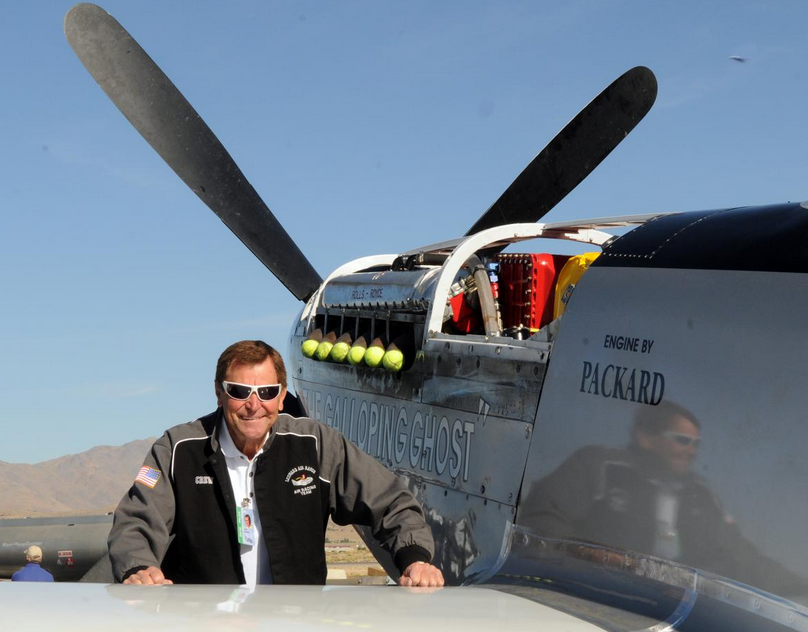
James Kent Leeward was born at Brackenridge, Pennsylvania, 21 October 1936, He was the son of Albert James Leeward and Mary Virginia Leeward. He was educated at the Culver Military Academy, a college-preparatory boarding school at Culver, Indiana. He graduated in 1952.
In July 1959, Leeward married Miss Bette L. Hofacker in Dade County, Florida. They had four children.
At the time of his death, James Kent Leeward was 74 years old.
© 2018, Bryan R. Swopes
